- 02 9712 1736
- [email protected]
- 212 Great North Road, Five Dock, NSW 2046
- Open 6 days from 7am
Maintaining good posture is essential for overall health and well-being. Especially when you look consider your life span and how you would like to enjoy your retirement years. Posture refers to the alignment of your body parts in relation to each other. However, it also refers to effects gravity is having on your body. This is important to remember when you are thinking about your posture. Good posture involves training your body to stand, sit, walk, and lie in positions where you place the least strain on your joints. While also supporting muscles, tendons and ligaments during movement or weight-bearing activities.
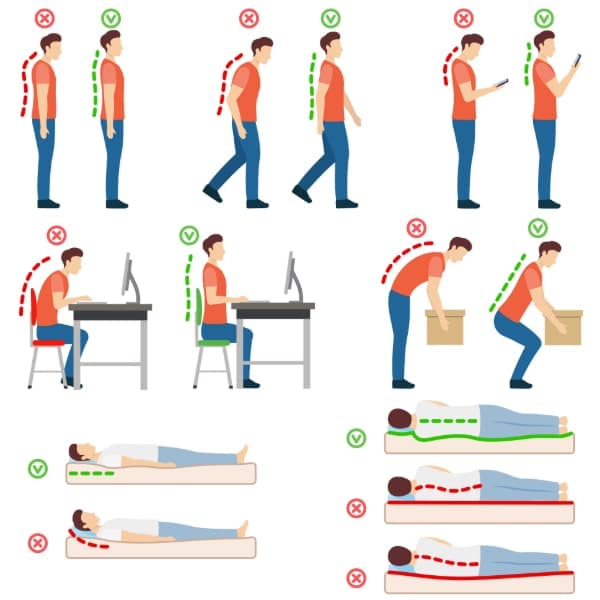
Posture refers to the alignment of your body parts in relation to one another. Good posture involves keeping your body in a position that puts the least strain on your joints and there supporting soft tissues. Soft tissue are your muscles, tendons, ligaments, connective tissue, cartilage and fascia. As an example, when you sit you would like to have your spine straight as this places the least amount of stress on your back joints, muscles, ligaments, tendons, fascia, skin, intervertebral disc, spinal cord, nerves, blood vessel and the cartilage between your joints. As you can see there is quite a lot of your body parts, effected by your posture.
Maintaining good posture is important for following reasons:
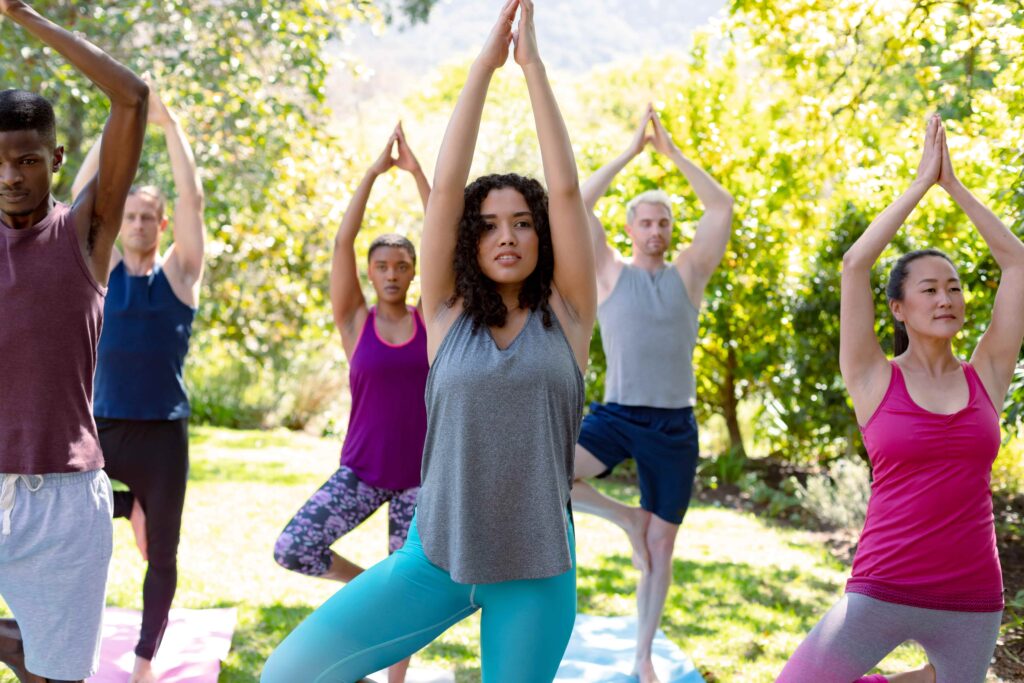
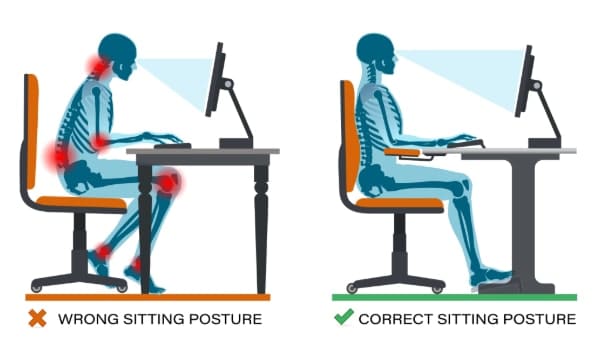
To maintain a good sitting posture, sit up straight with your back aligned against the back of the chair. Keep your feet flat on the floor, with your ankles just in front of your knees. Bend your knees to a few degrees off a right angle. Sit on your sitting bones, with your back straight and shoulders relaxed. Have your shoulder blades back against the chair. Then slightly lift the top of your head to the sky. When possible use an ergonomic chair with lumbar support to maintain the natural curve of your spine.
To maintain a good standing posture, stand tall with your shoulders relaxed and your feet hip-width apart. Keep your weight balanced evenly on both feet and avoid locking your knees. Your shoulder blades should back and down against your rib cage, so if you were to stand against a wall, they would be flat on the wall. Then, imagine a string pulling you up from the top of your head up to the sky, to maintain an upright posture.
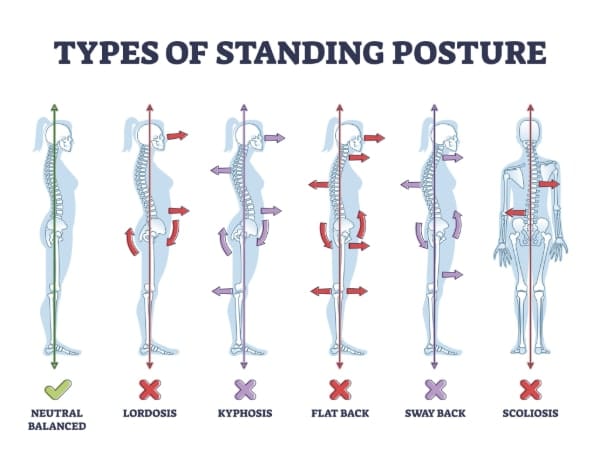
Walking posture is something we can all work on. For many of us, we slow change how we walk, in response to different pains we experience through out life. To maintain a good walking posture, keep your head up, shoulders back, and abdomen pulled in. This can be achieved by gently pulling your lower ribs in. Then slightly tuck the pelvis to activate the core. Swing your arms naturally and take comfortable strides. Avoid slouching or leaning forward while walking. Walking posture is more complex then sitting and standing, so consider seeking professional advice from a local health care provider to improve your walking posture.
Improving your posture is like many things in life, it takes lots of little bits of practice. The hardest part is to remember to focus on your posture. We recommend picking a time of day each day to begin working on your posture. For example when you clean your teeth or wait in line for that morning coffee. A little trigger such as these, can help you remember to start the process of focusing on your posture. Then you can build on your new and improved posture through out the day, because you will become more aware of your posture.
To improve your posture, practice good posture habits throughout the day. Switch sitting positions regularly. Stand up and stretch every half hour, or walk around for 5 minutes. Regular walking reminds your brain that you need to be able to move through different ranges of movement. Your brain will respond by relaxing your soft tissues and you will feel loose. Another good tip is to practice strengthening exercises to improve muscle strength and flexibility. Body weight is all you need to improve your strength and flexibility. Simple moving your body through many different movements under a light load, such as your body weight, will stimulate your body to improve and maintain your strength and flexibility.
Probably the best tip for good posture is this. Always lift the top of your head to the sky. If you do this simple trick, the rest of your body will naturally fall into a good posture. The key is to remember!
Both stretching and building strength are important for good posture. Stretching helps improve flexibility. Flexibility is important so when you move your body it moves easily and does not place stress on your joints and soft tissues. While building strength allows your muscles, to support your spine and joints, and maintain proper alignment. Wherever possible you want your muscles doing the work. So having both flexibility and strength is important. Placing less stress on your joints, will decrease the risk of degeneration with aging.
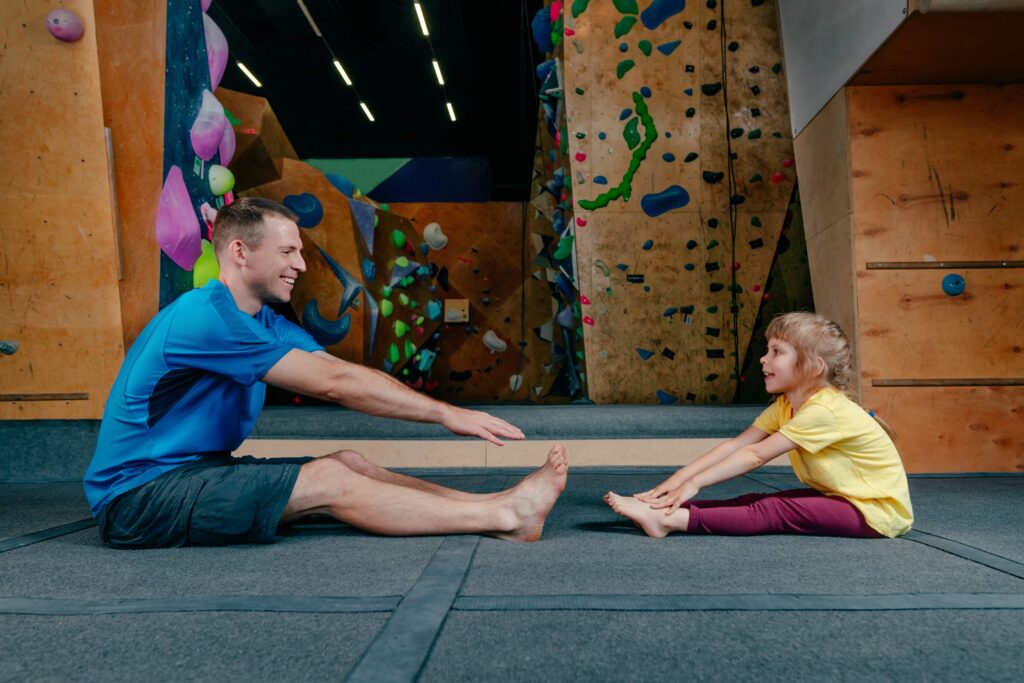
Going back to our best tip for good posture. The one simple thing you can do every day to improve your posture is to imagine a string pulling you up from the top of your head, to the sky. This will help you maintain an upright posture and reduce the risk of developing poor posture habits.
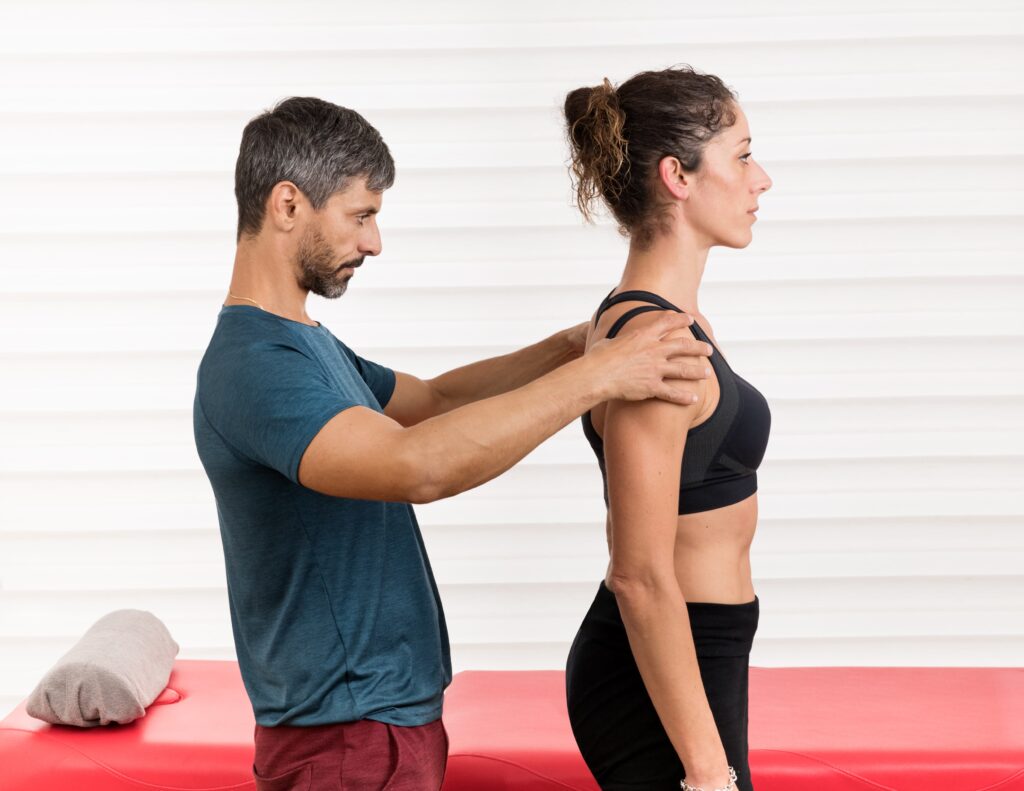
Maintaining good posture is essential for overall health and well-being. By being mindful of your posture and practicing good habits, you can reduce the risk of pain and injury, improve your energy levels, and boost your self-confidence. Incorporate these tips into your daily routine to enjoy the benefits of good posture.
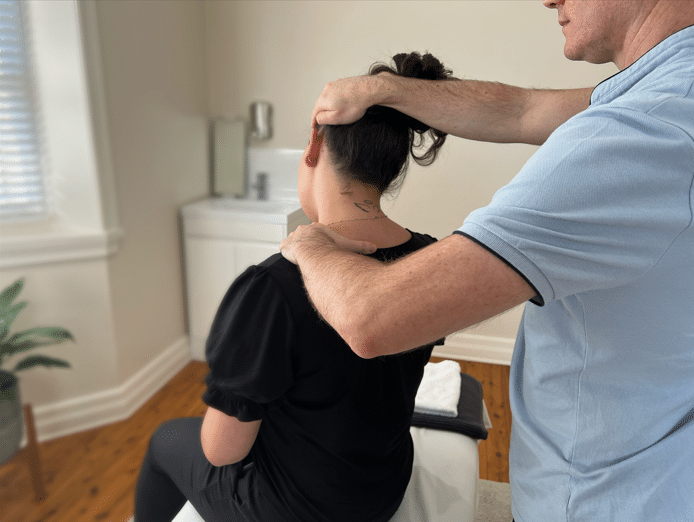
Forest Lodge, Annandale, Glebe, Leichhardt, Balmain, Haberfield, Canada Bay, Rozelle, Rodd Point, Wareemba, Stanmore, Petersham, Lilyfield, Hunters Hill, Enfield, Cabarita, Mortlake, Rhodes, Burwood Heights, Birchgrove, Gladesville, Huntleys Point, Abbotsford, Ashfield, Croydon Park, Croydon, Chiswick, Russell Lea, Burwood, Strathfield, Concord, Drummoyne, North Strathfield, Liberty Grove, Dulwich Hill, Lewisham, Camperdown, Ashbury, Homebush, Homebush West, Woolwich, Henley, Summer Hill, Sydney Olympic Park

About
Five Dock Osteopathic & Chiropractic is located in Canada Bay, in Sydney’s Inner West. Servicing suburbs including Burwood, Croydon, Drummoyne, Five Dock, Haberfield, Concord, Abbotsford, Chiswick, Leichhardt, Wareemba, Russell Lea, Summer Hill, Strathfield.
Clinic hours
Monday, Tuesday, Thursday 7AM – 7PM
Wednesday, Friday 7AM – 5PM
Saturday 7AM – 2PM
Sunday Closed
Contact details
212 Great North Road, Five Dock, NSW 2046
Phone: 02 9712 1736
Fax : 02 9712 1736
Email : [email protected]